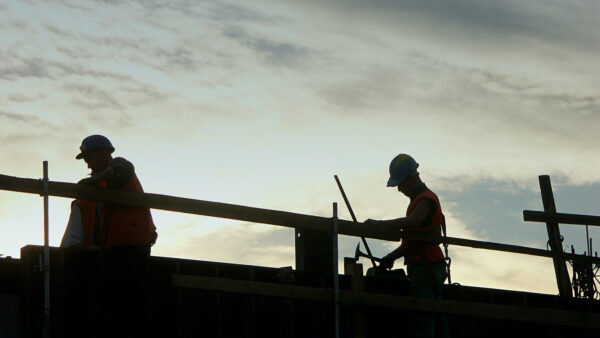
As major changes to the immigration system come into effect, here’s what industry employers need to know.
Following the publication of the immigration white paper in May 2025, the UK government issued a Statement of Changes on 1 July 2025 announcing reforms to the immigration system that comes into force today (22 July).
The changes are expected to significantly affect sectors, like construction, that rely on overseas skilled workers and roles identified by UK Visas and Immigration (UKVI) as lower skilled.
Several changes are being introduced, but three key reforms will have the greatest impact on the sector.
The salary thresholds under the skilled worker route will rise for both current visa holders and for new applicants.
For those entering the route from 22 July, thresholds will increase from £38,700 to £41,700 per year, with higher going rates tied to their specific occupation code.
Some exceptions will apply depending on the individual’s role and circumstances.
Skill thresholds
In addition, the skill threshold will increase from RQF Level 3 (A level) to Level 6 (graduate level), removing around 180 occupations from eligibility from 22 July.
Applicants planning to work in roles below RQF Level 6 will no longer qualify for sponsorship unless they are already in the route or have applied before 22 July.
These individuals may still apply under the skilled worker route if their roles are listed on the Immigration Salary List or the new interim Temporary Shortage List.
The Immigration Salary List itself will be expanded on the recommendation of the Migration Advisory Committee (MAC) to include some lower level roles (RQF 3-5) in shortage.
Temporary Shortage List
The longer-term plan is for the list to be replaced by a new Temporary Shortage List. Construction roles such as bricklayers, integrity pipe welders, roofers, carpenters and retrofitters will continue to be included.
Employers in the sector who already sponsor skilled worker visa holders will still benefit from discounted salary thresholds.
The Immigration Salary List and the Temporary Salary List will run in parallel, although the government plans to remove both lists on 31 December 2026
For now, the Immigration Salary List and the Temporary Salary List will run in parallel, although the government plans to remove both lists on 31 December 2026, with some exceptions.
The Temporary Shortage List is a short-term measure including 52 RQF Level 3-5 roles, with no salary discounts.
Some of these roles are relevant to construction, such as welding trades, metalworking production, and construction and building trades. However, only certain specific jobs within these categories, such as builders and fence erectors, can be sponsored.
While the Temporary Shortage List allows lower skilled roles to continue to be filled by overseas talent, new applicants sponsored after 22 July will not be able to bring family members to the UK.
Future review of list
Working with the Labour Market Evidence Group, the MAC will carry out a two-stage review of the list in the next 12 to18 months. Businesses should expect further announcements in the coming months on the future of these lists and roles included.
Construction businesses should continue to engage with the MAC by submitting evidence and recommendations for both lists to help address ongoing skill shortages in the sector.
The UK government has stated that these interim measures aim to address skilled worker shortages across various sectors.
However, with changes affecting salary thresholds, sponsorship eligibility and the ability to bring family members, strategic planning is essential.
This is especially true given the scheduled end of the Immigration Salary List and the interim Temporary Shortage List on 31 December 2026.
Further updates are expected on the future of lower skilled roles. Industries affected by the changes may need to explore alternative immigration routes while preparing for the needs of their overseas workforce and mid-skill level roles.
Ilaria Iovieno is an associate at Fragomen.









